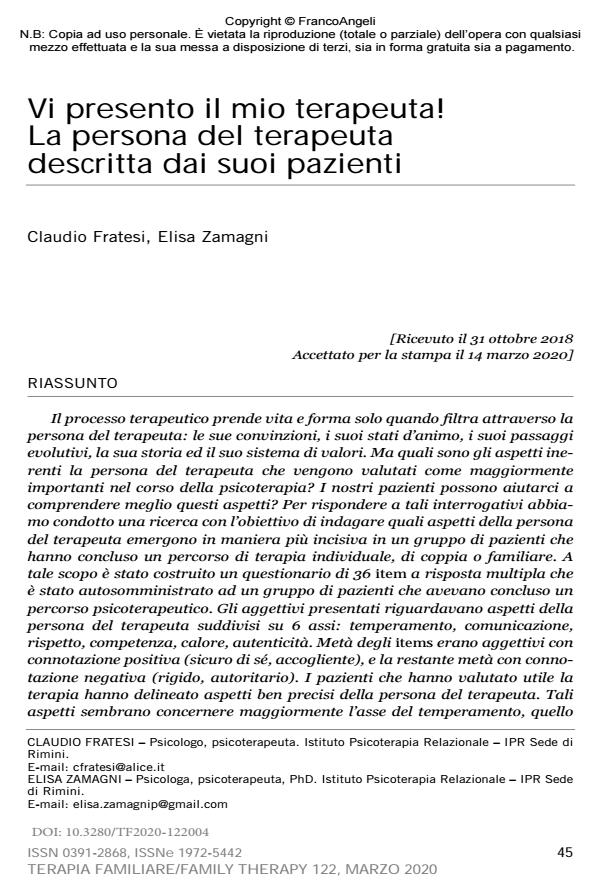I introduce you my therapist! A description of the person by his/her patients
Journal title TERAPIA FAMILIARE
Author/s Claudio Fratesi, Elisa Zamagni
Publishing Year 2020 Issue 2020/122
Language Italian Pages 24 P. 45-68 File size 194 KB
DOI 10.3280/TF2020-122004
DOI is like a bar code for intellectual property: to have more infomation
click here
Below, you can see the article first page
If you want to buy this article in PDF format, you can do it, following the instructions to buy download credits

FrancoAngeli is member of Publishers International Linking Association, Inc (PILA), a not-for-profit association which run the CrossRef service enabling links to and from online scholarly content.
The therapeutic process comes to life only when it filters through the person of the therapist. This specific process takes a shape by way of the convictions, the states of mind, the history and the system of values of the therapist. What are the aspects inherent to the person of the therapist who are evaluated as most important in the course of psychotherapy? Can our patients help us better understand these aspects? To answer these questions, we conducted a research with the aim of investigate which aspects of the therapist’s person emerge in a more incisive way in a group of patients who have completed an individual, couple or family therapy training. To this aim, a questionnaire of 36 multi-choice items was constructed, which was self-submitted to a group of patients who had completed a psychotherapeutic training. The adjectives presented concerned aspects of the therapist’s person divided into 6 axes: temperament, communication, respect, competence, warmth, authenticity. Half of the items were adjectives with positive connotations (self-assured, welcoming), and the remaining half with negative connotations (rigid, authoritarian). Patients who found therapy useful outlined very specific aspects of the therapist’s person. These aspects seem to be more concerned with the axis of temperament, the one that has more to do with the person of the therapist. These traits could be the basis for the emotional involvement of the patient and therefore of the therapeutic relationship itself.
Keywords: Person, therapist, therapy training, relation, psycotherapy.
Claudio Fratesi, Elisa Zamagni, Vi presento il mio terapeuta! La persona del terapeuta descritta dai suoi pazienti in "TERAPIA FAMILIARE" 122/2020, pp 45-68, DOI: 10.3280/TF2020-122004